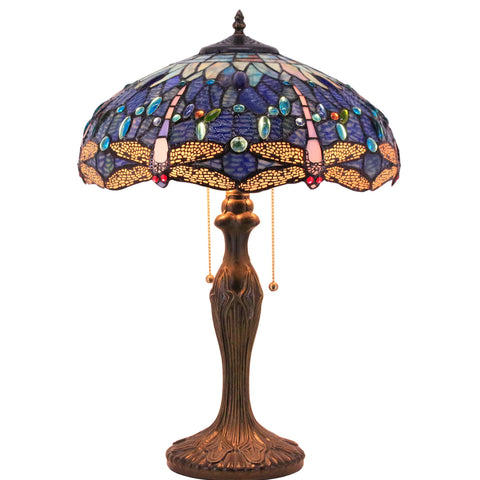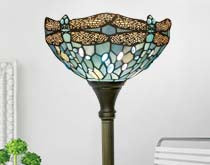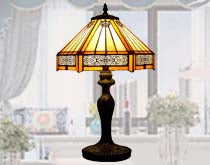Tiffany Lamps: Art Deco or Art Nouveau
When we talk about Tiffany lamps, we usually think of colorful, handcrafted glass fixtures that are designed with elegance and creativity. But which art style do Tiffany lamps belong to? Is it Art Deco or Art Nouveau?
In fact, the period in which the Tiffany lamp was produced is a good indicator that it belongs to the Art Nouveau style. But in order to answer this question, we first need to delve into the characteristics and origins of these two art styles.
Related reading: How to identify real stained glass table lamp in 2022?

What is Art Deco
You know that style of design that looks modern and a little retro at the same time, full of striking geometric shapes and clean lines? That's Art Deco! This style was very popular in the 1920s and 1930s. Imagine a time when people were in the midst of two world wars and craved a new, modern and vibrant art form to show their optimism and progress. From skyscraper designs to fashionable hemlines, from ancient Egyptian pyramids to ancient Greek columns, Art Deco was everywhere, and it was as vibrant and hopeful as the music of the era.
What is Art Nouveau
Have you ever been captivated by a certain design and felt that it was both natural and a bit mysterious, as if it came out of a dream? That might be the charm of Art Nouveau. This style was very popular in the late 19th and early 20th centuries, especially in Europe. It was inspired by nature, and everything from sinuous plants to elegant female figures can be found in this style. And, did you know? This style was also influenced by oriental art, especially those exquisite Japanese prints.Art Nouveau is not just an art style, it is an attitude towards life, pursuing harmony with nature and emphasizing the value of craftsmanship.
Which of these two styles does Tiffany Lamp favor? In order to find out, we need to delve deeper into the origins and design philosophy of the Tiffany lamp.
The Origin of Tiffany Lamps
Tiffany lamps are named after their founder Louis Comfort Tiffany, one of the most famous American glass artists of the late 19th and early 20th centuries, whose love of glass and admiration for nature led him to create designs full of vivid colors and flowing lines. The flowers, butterflies, and peacocks that often appear in his work are typical of Art Nouveau's style.
Louis Comfort Tiffany's design philosophy was heavily influenced by Art Nouveau. He opposed the stereotypes and repetitions of industrialized production and insisted on handmade production, pursuing the uniqueness of each piece. His glass craftsmanship, especially his original stained glass technology, revolutionized the art of glass.

Therefore, from the origin of Tiffany lamps and Louis Comfort Tiffany's design philosophy, we can clearly say that Tiffany lamps represent Art Nouveau style rather than Art Deco.
Although it is said that Tiffany lamps represent Art Nouveau style rather than Art Deco, it is undeniable that nowadays Tiffany style lamps have many users who like to use them as decorative lamps because of their superior appearance.
Especially which small Tiffany table lamps, Tiffany pendant lamps, their small appearance to provide light may not be enough to work or lighting, but so attractive delicate appearance, placed there is the focus of the crowd, regardless of whether it is the state of the lights on or off. Tiffany style lamps not only have a variety of sizes, there are a variety of styles and themes, functional characteristics, with which to Decorating your home with Tiffany lamps is a decision you can't go wrong with.
If you want to browse more about Tiffany lamps, you can visit the werfactory online store or search for werfactory Tiffany lamp on Amazon.
Related reading: History of Tiffany lamps
Summarize
The Tiffany lamp, a work of art that represents elegance and creativity, is undeniably influenced by the Art Nouveau style. From its smooth lines, and the worship of nature, to Louis Comfort Tiffany's pursuit of craftsmanship and uniqueness, all make Tiffany lamps a classic representative of Art Nouveau.
When we appreciate these colorful and uniquely designed lamps, we may also want to understand and appreciate the art history and culture behind them, so that our appreciation of these works of art will be more in-depth and comprehensive.

























